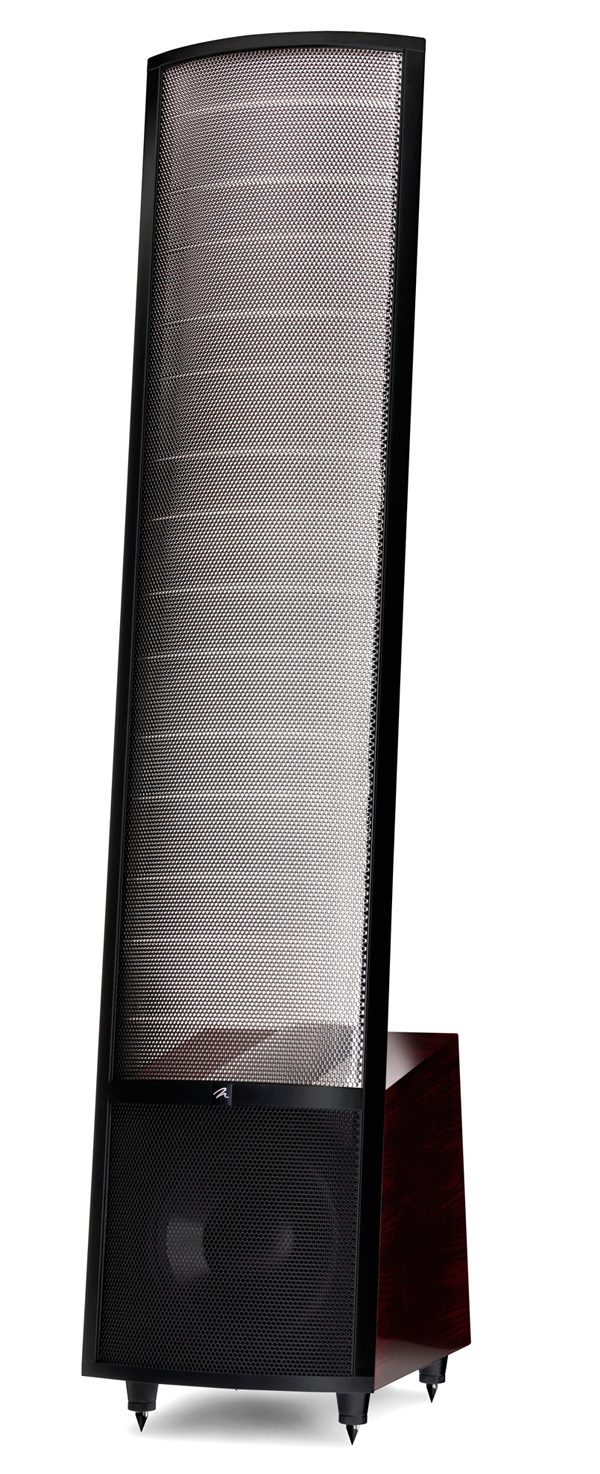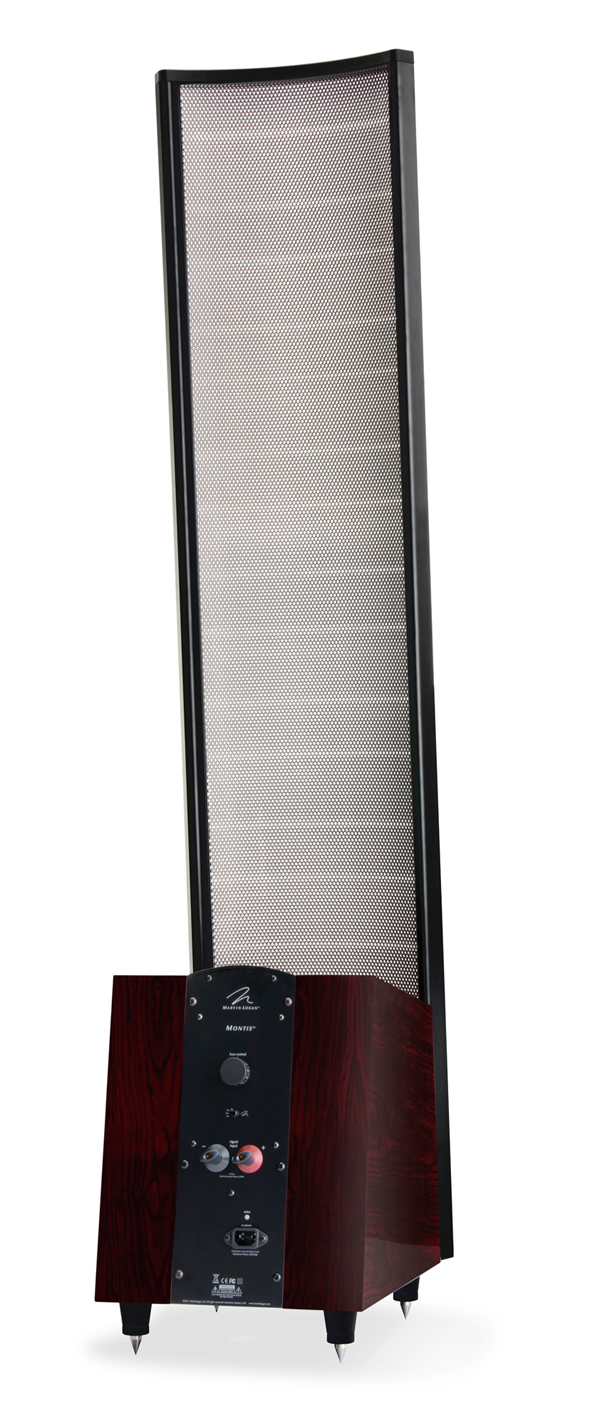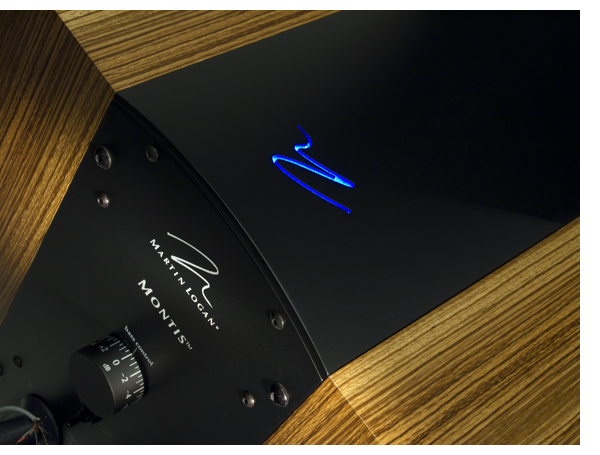MartinLogan Montis Speakers A Case of Bass
By Jeff Dorgay Variations on panel-speaker themes are so widespread, they’re enough to make one’s head spin: magnetic planar, ribbon, electrostatic, and hybrid combinations constitute the bevy of options. And woe to the audiophile that doesn’t agree with one approach. For instance, admitting to a Magnepan aficionado that you like MartinLogan speakers can be the equivalent of treason, sparking reactions that will leave you thinking you just argued with a bunch of soccer hooligans in a pub.
Variations on panel-speaker themes are so widespread, they’re enough to make one’s head spin: magnetic planar, ribbon, electrostatic, and hybrid combinations constitute the bevy of options. And woe to the audiophile that doesn’t agree with one approach. For instance, admitting to a Magnepan aficionado that you like MartinLogan speakers can be the equivalent of treason, sparking reactions that will leave you thinking you just argued with a bunch of soccer hooligans in a pub.
Having owned pretty much all panel types over the years—from the Quad 57 to the mighty Magnepan Tympani to the phenomenal MartinLogan CLX—I love ‘em all. However, they all have limitations that, when minimized, allow for captivating musical presentations one will either adore or despise. Much that of like a single driver/SET system, an ESL speaker’s midrange is positively dreamy. Vocals, in particular, sound amazingly lifelike.
Other than its CLX and earlier CLS, all full-range electrostatic designs, MartinLogan hangs its hat on a hybrid design that mates a dynamic (cone) woofer to an ESL panel. The approach looks great on paper, with the cone woofer bringing the necessary punch and the ESL panel providing the trademark finesse. In practice, however, it’s a tough marriage, as the woofer and ESL panel dissipate sound pressure in different ways, making for a slight disconnect in the frequency spectrum.
Critics of the hybrid approach argue that the woofer doesn’t have the necessary speed to keep up with the ESL panel, robbing the otherworldly coherence that draws us to the design in the first place. So, often like that other marriage of convenience, the SUV, it isn’t always as sporty or utilitarian as some might prefer. I’ve always been willing to excuse a bit panel/woofer integration perfection for weight and slam. I can’t play Metallica on Magnepans, but I can on the MartinLogans.
No manufacturer does a better job of joining a cone woofer to an ESL panel than MartinLogan. It’s for good reason—the company has more seat time with the breed than anyone else. MartinLogan’s constant refinement of woofer and crossover designs (and improvements to the ESL panel) cheats physics rather handily. Enter the $9,995 Montis.
MartinLogan provides some of the best manuals in the business, so you will be rocking out before you can even say “vertical dispersion.” These speakers weigh only 58 pounds each and are easily unpacked by one person. If your room accommodates such a setup, start with the speakers about 8-9 feet apart and with slight toe-in. MartinLogan’s “flashlight” method for setting toe-in works very well and, even though these speakers can nicely when placed close to the side walls of a listening room, the further you can keep them away from side walls results in a larger overall sound field.
When listening to the Montis on both the long and short wall in my 16 x 25 foot listening room, the former gets the nod for producing an expansive stereo image. I suggest moving the speakers apart in 6-inch increments until the stereo image collapses, then back in ever so slightly. The Montis are shipped with hard rubber feet that can be swapped with spikes. The latter results in slightly faster bass transients, but thanks to the great improvements I didn’t hear as much of a difference between spiked and unspiked operation as in past ML models.
The bass control, located on the rear panel, affects the output level of the woofer +/-10db at 100hz. Start at the center (zero) position and optimize speaker placement for the best balance of bass definition and midrange clarity, sparingly using the bass control for best results. Also, the Montis has a lighted “ML” logo on top of the woofer cabinet and a small blue LED on the front face. A three-position switch allows users to choose maximum blue, dim, and off.
Beauty Beneath the Surface
Looking much like the earlier Spire, reviewed very enthusiastically in Issue 20, the Montis uses the same ESL panel as the Summit X and a slightly different 10-inch woofer that crosses over to the panel 10hz higher at 340hz. (It was 330hz in the Spire.)
A new Vojkto-designed 24-0bit DSP crossover enables a far better match between woofer and panel than ever before. With custom slopes on the high- and low-pass frequency segments, the Montis boasts more bass drive than the Spire. Plus, integration improved tremendously. MartinLogan designers never sit still, and as scary as “equalized” sounds in product literature referring to the woofer, the concept works splendidly. According to Devin Zell, MartinLogan product manager, the DSP crossover yields another benefit: consistency. “We were able to achieve much more consistent results within the crossover, holding values to a much tighter tolerance than with passive components. This also provides more consistency from one sample of the product to another.”
Acoustic jazz tracks underscore how far the Montis has come. While the Summit and Spire never struggled in this area, acoustic bass always lacked a bit of texture. No longer. Grant Green’s Idle Moments exemplifies this newfound fluidity. The bass playing here is subtle, seldom taking center stage. Yet the additional texture supplied by the Montis keeps the bass in the center of the pocket, right where it belongs, allowing the listener to forget about it and providing a better foundation for the music.
Whether real or imagined, the increased clarity in the lower register permits more midrange detail to shine through. Grace Jones’ Nightclubbing features a more detached electric bass line that, while great on a pair of Cerwin Vegas, usually sounds somewhat out of place on a high-end system. The Montis nails it, retaining the force albeit tightening up the overall feel.
Tube Friendlier
Many ESL enthusiasts clinging to the notion that tubes are the only way to go with beloved panels forget that hybrid designs are a different animal. Earlier MartinLogan hybrids sport a minimum impedance in the 2-3 ohm range, making them easier to drive than recent models that drop to a .25-ohm impedance at 20khz.
While the Vantage, Summit, and Spire are not amplifier destroyers in the way that my full-range ribbon Apogees are, the high-frequency response nose-dives with practically every tube amplifier, often making for a combination that sounds similar to a traditional dynamic speaker, albeit with a blown tweeter. Happily, the Montis sports a minimum impedance of .56 ohms (with an overall impedance of 4 ohms)—making these speakers much easier to drive with a tube amplifier.
The match with the ARC REF 150 is downright spooky—plenty of high-end sparkle, taut bass response, and a wonderful, airy midrange that one usually associates with the finest vacuum-tube/ESL combinations. This amplifier stands as the one of the best companions for the Montis—the very best I’ve heard yet.
The Montis has no problem being driven by the 25-watt Grant Fidelity SET monoblock amplifiers, which utilize the gigantic 845 output tube. High frequencies don’t roll off; however, a slight midbass hump considerably warms up the sound. Some will welcome the more romantic sound, the pairing sounding more like a pair of Sound Labs or Acoustat 2+2s with more bass drive. Either way, the fact these speakers can be comfortably driven by an SET is remarkable. Listeners whose musical taste leans toward female vocalists should be enraptured by this marriage. Sinead O’Connor’s How About I Be Me (and You Be You?) proves exquisite, yielding the larger-than-life vocals at which ESLs excel.
 Equally Adept With Solid-State
Equally Adept With Solid-State
These speakers are no slouch with the Burmester 911 mk.3, either. Thanks to the Montis’ resolving abilities, the massive solid-state amplifier brings an equally tasty albeit different flavor to the fore. Whereas the REF 150 has a definite ceiling regarding how loud it can play, the 911 mk. 3 easily drove the efficient (91db/1 watt) Montis to brain-damage levels. Even when cranking the title track from AC/DC’s For Those About To Rock, there’s still plenty of headroom for the parting canon shots.
Fast speed metal, served up via Megadeth, Anthrax, and Motorhead, presents no issue for the Montis when the Burmester amplifier is at the driver’s seat, keeping the sound from the panels clean and controlled. Akin to the Summit, Spire, and Summit X, these ESLs rock—provided your amplifier is up to the task. An amplifier of lesser quality has more trouble driving the panels, a deficit that’s often be mistaken for a woofer/panel coherence issue. The better your power amplifier, the smoother these speakers sound.
Slowing the pace, the acoustic guitar interlude in the middle of Crosby, Stills, Nash and Young’s “Déjà Vu” from the 25th Annual Bridge School Concerts becomes particularly moving. You can easily discern the sound of each individual guitar in its space and, when the players hit the occasional low string, the additional coherence of the new woofer/crossover keeps you in the groove, never drawing attention to the speakers.
Solid Evolution
Should you trade-in your Vantage, Spire, or Summits for Montis? It depends on your room, system, music, and pocketbook. If you absolutely must have the latest/greatest, snag a pair. Is this speaker a significant upgrade? Unquestionably.
When MartinLogan developed the current Spire and Summit X via crossover advances made on the CLX model, the speakers’ added midrange clarity impressed but the main quibble with the hybrid ESL design still lurked. The Montis makes the biggest jump to date at integrating a cone woofer with an ESL panel. If that’s what you’ve been craving, you will enjoy the Montis.
MartinLogan Montis
MSRP: $9,995/pair
www.martinlogan.com
Peripherals
| Analog Source | AVID Acutus Reference SP/SME V tonearm/Koetsu Urushi Blue Cartridge |
| Digital Source | dCS Paganini Sooloos Control 15 |
| Preamplifier | Burmester 011 |
| Phono Preamplifier | ARC REF Phono 2 |
| Power Amplifier | ARC REF 5 Burmester 911 mk. 3 Pass Labs XA200.5s |
| Power | Running Springs Dmitri and Maxim power conditioners |
| Cable | Cardas Clear |



